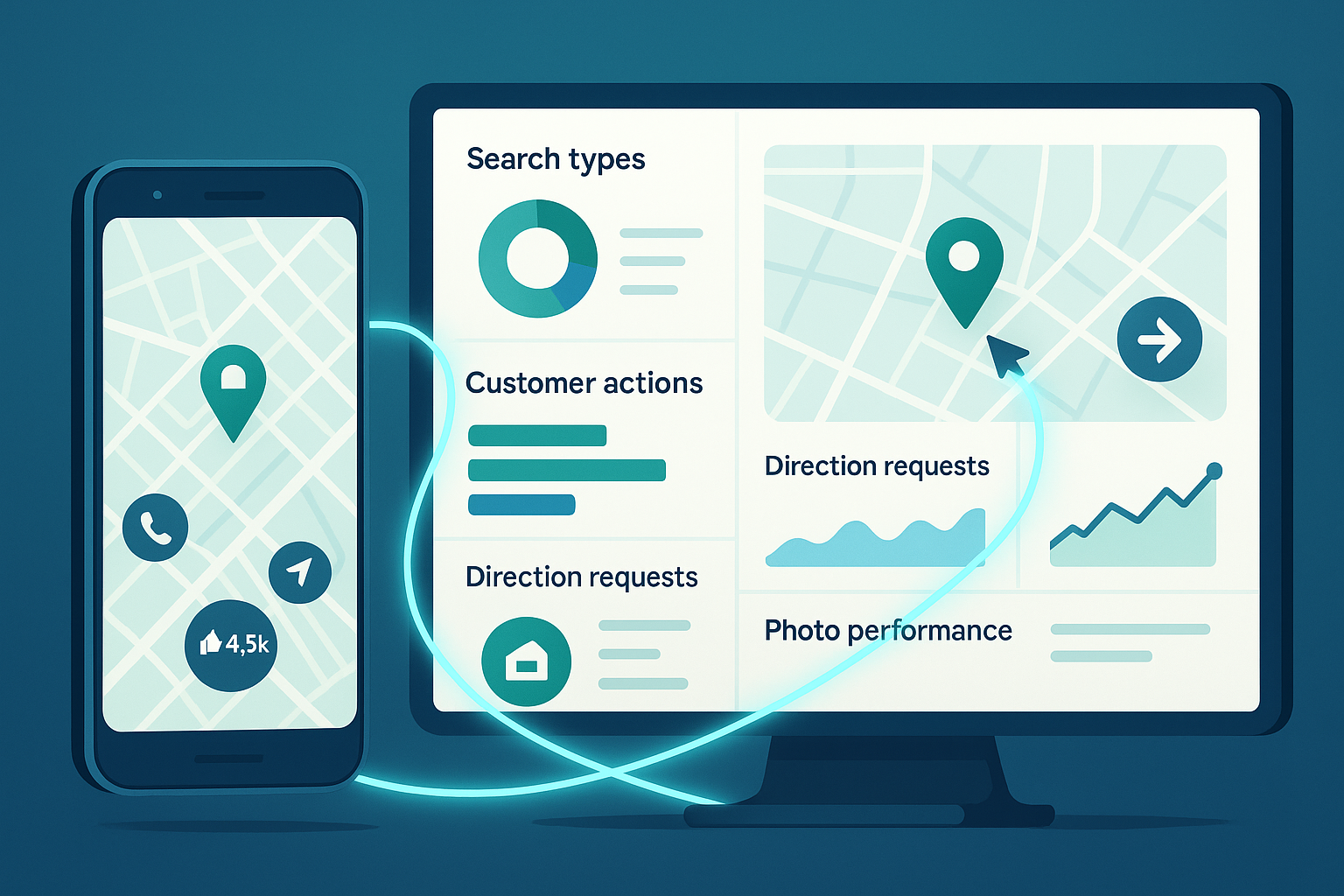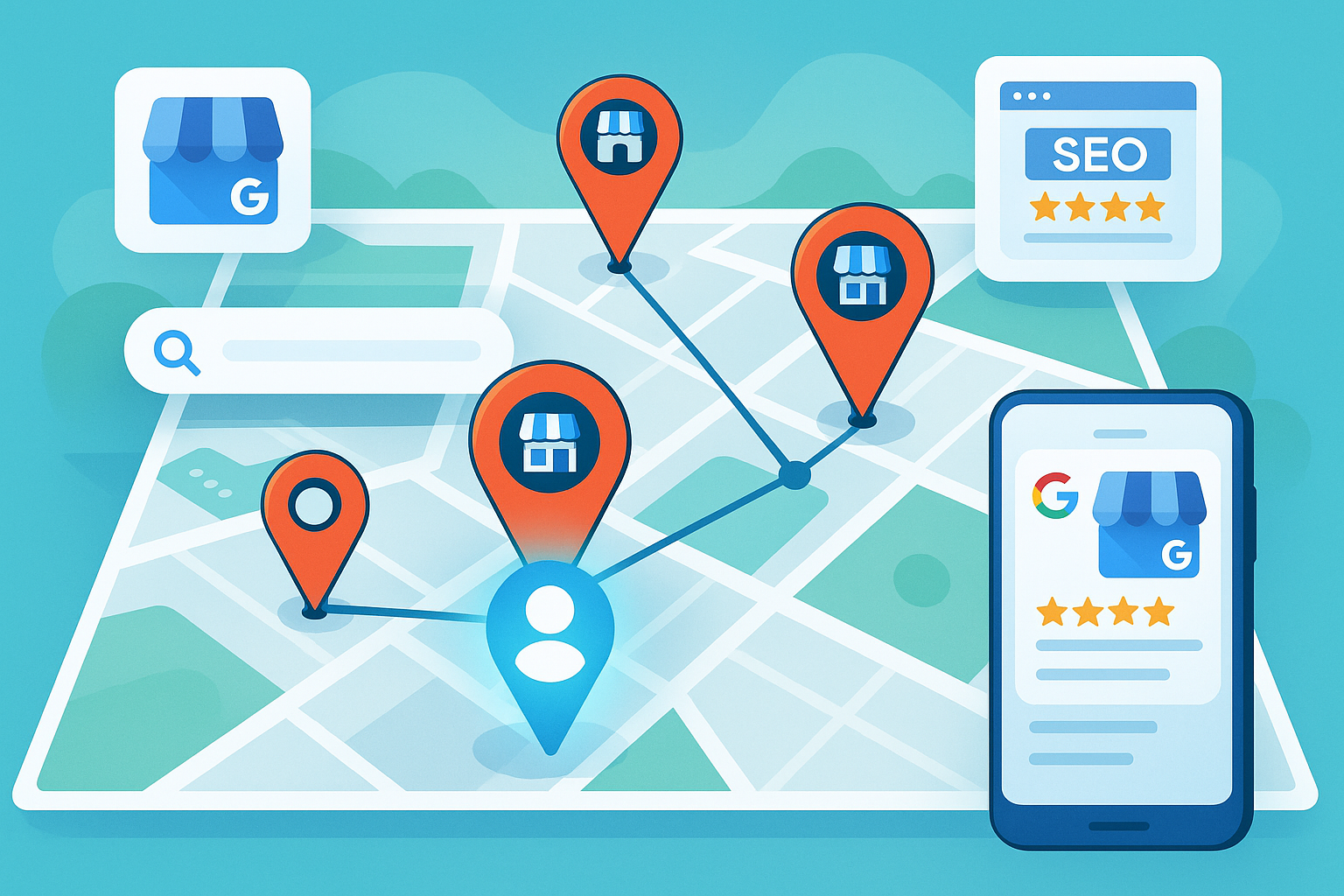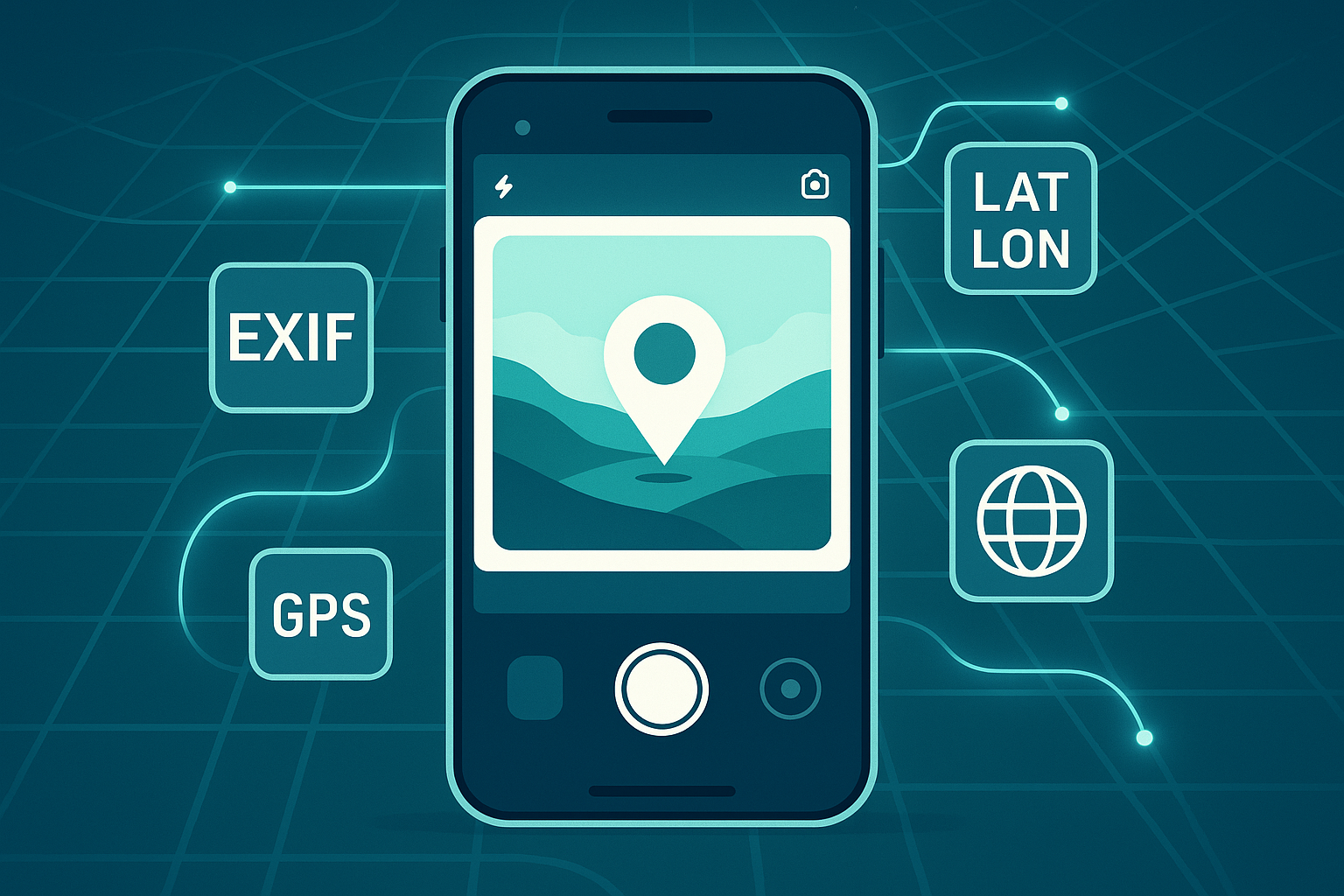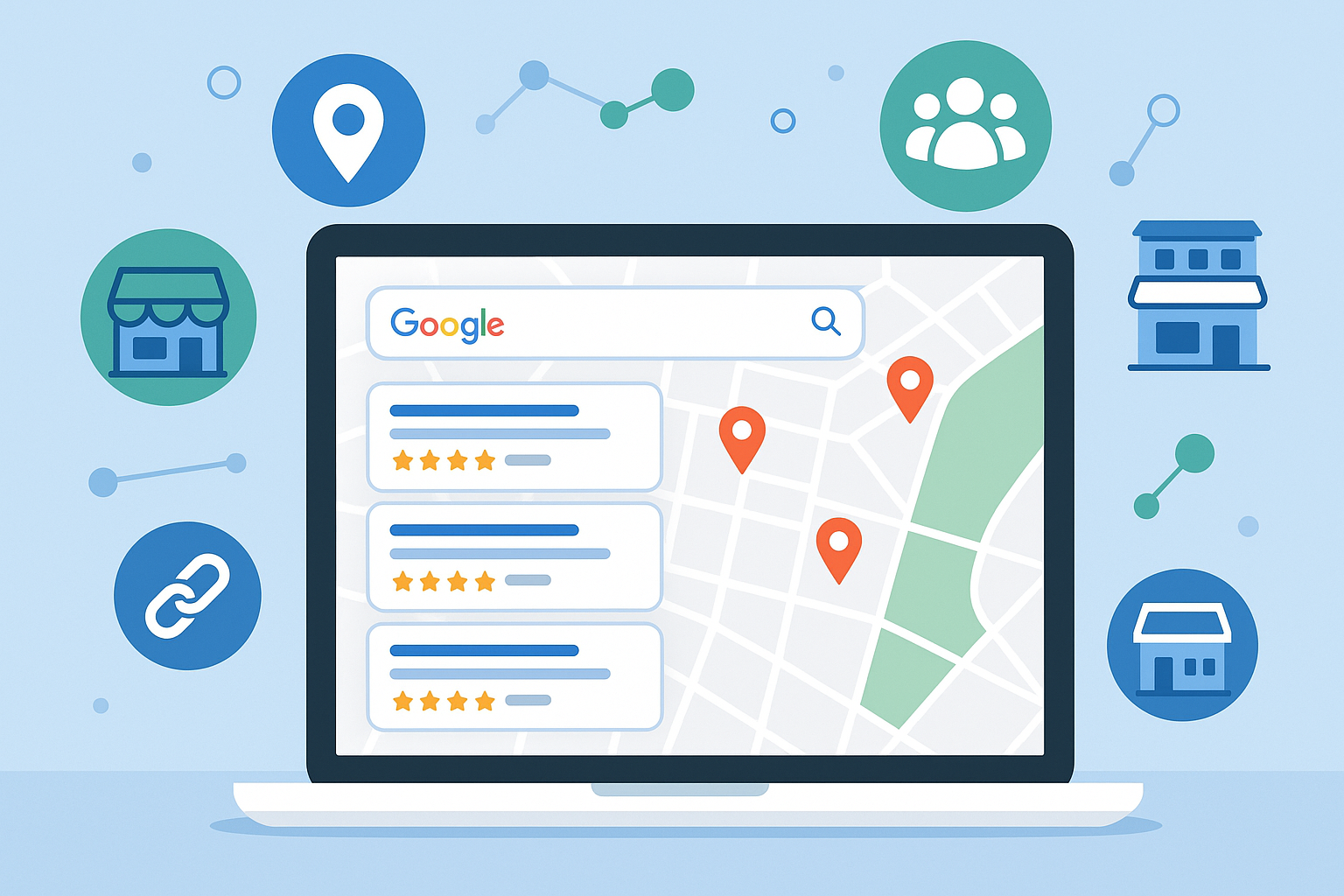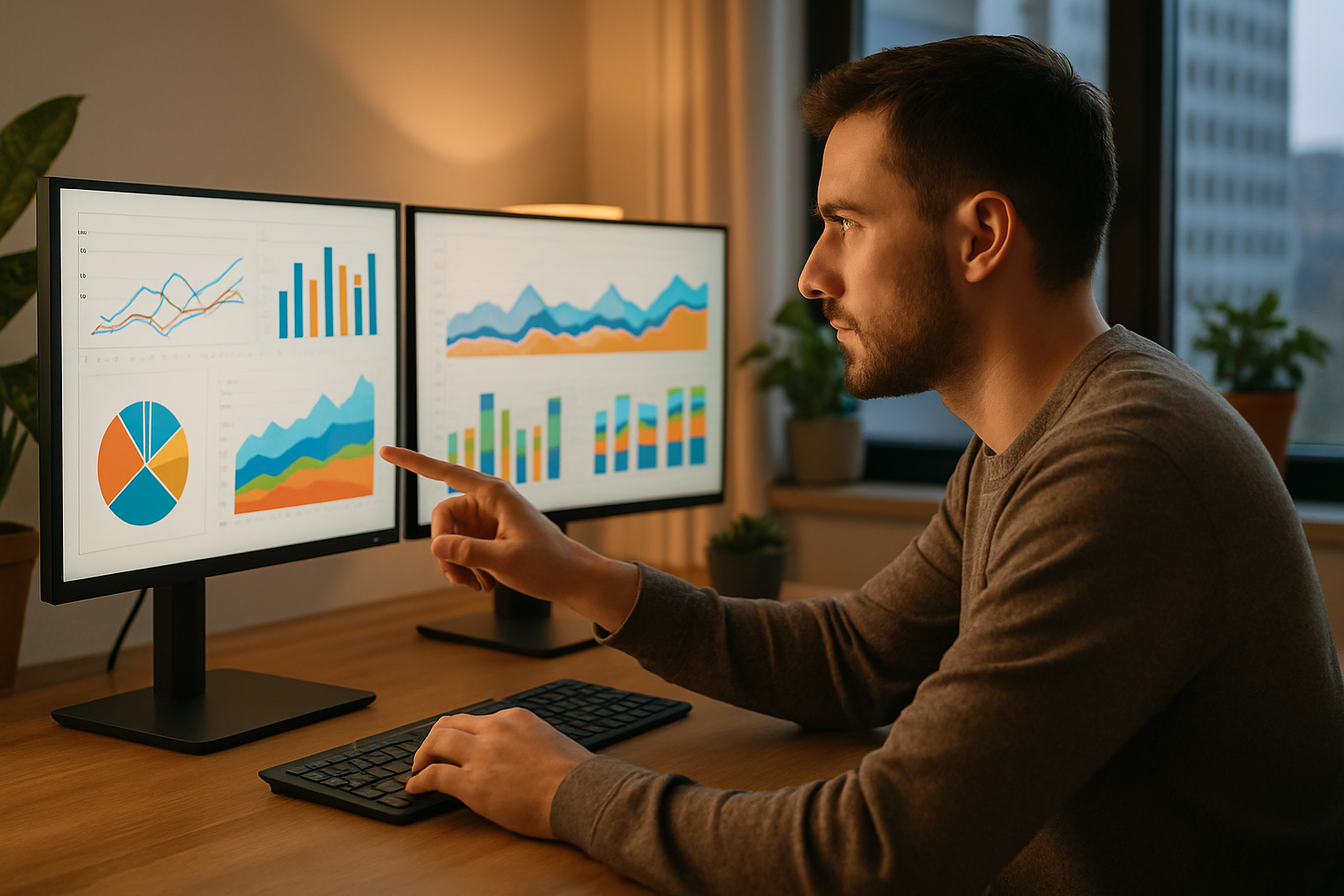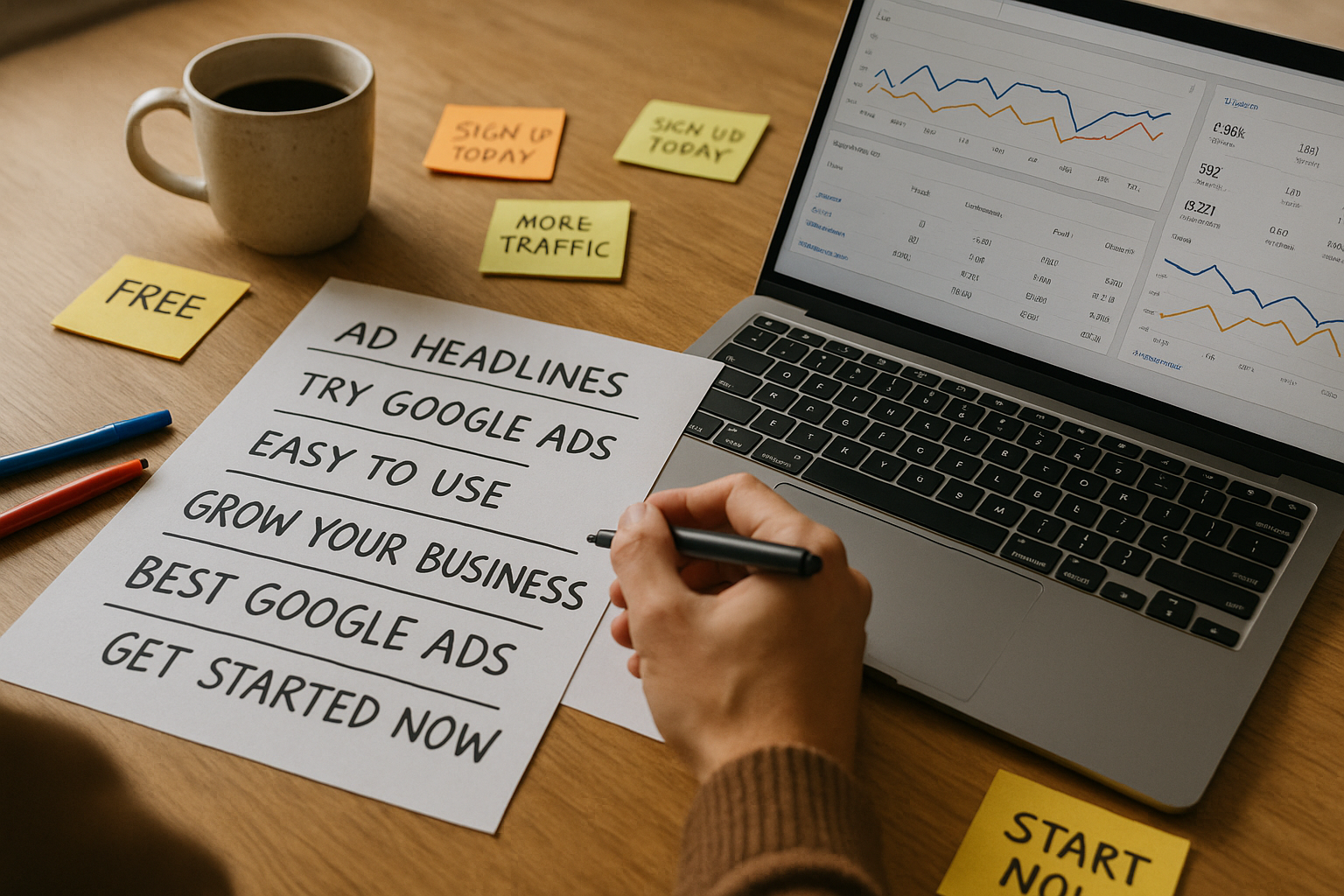How do photos and videos on Google Business Profile affect rankings?
Google’s local search algorithm is complex and multifaceted. While no one outside Google knows the full recipe, SEO practitioners have long suspected and partially confirmed that visual content (i.e. photos and videos) plays a supportive role in how Google assesses the authority and appeal of a business listing.
First, visual content is an engagement proxy. A GBP that is richly populated with relevant, high-quality photos and videos tends to get more clicks, more views, and more interaction from users. Those engagement signals — whether Google is measuring dwell time, photo views, or click-throughs — help Google understand that the listing is active, well-maintained, and relevant. A listing that looks neglected or barren may be deemed lower in quality by the algorithm.
Second, media content provides contextual clues. A set of interior photos, staff images, product shots, or project videos give Google more data points about what your business offers, what environment it operates in, and how users interact. For example, an interior shot of a restaurant with visible seating helps Google validate that it is a dine-in place. A video walkthrough of your premises can enhance Google’s confidence in how your business functions. That additional context complements the textual and category-based signals that Google already uses.
Third, media can influence local pack and map ranking features. When Google shows the local pack (the 3–4 business listings under the map) or in the “Local Finder,” one of the visible differentiators is the presence of images or videos. A business with multiple, relevant visuals may attract more clicks, and Google may favor listings that appear more “complete.” Some industry observers argue that the “completeness” or “rich media presence” of a listing is one of Google’s soft criteria.
However, visual content is unlikely to be a dominant ranking factor by itself. Rather, it is one of many supplementary signals that can help tip the balance when multiple businesses are closely comparable in terms of reviews, citations, proximity, and on-page SEO. In the following sections, we’ll explore how various types of visual content behave, user contributions, strategies, and metrics to optimize.
User-generated photos and videos: influence and management
One of the fascinating dimensions of media on GBP is that it’s not only publisher-controlled; users (customers, passersby) can upload photos and, in some cases, videos. These user-generated visual contributions have both opportunity and risk. Understanding how to leverage, moderate, and respond to them is vital.
From a positive perspective, user-generated photos and videos serve as social proof. They show actual customers interacting with your space, products, or services. If someone sees a real diner in your restaurant, or a genuine customer using your product, that is often more persuasive than staged images. Google may favor listings that accrue fresh, genuine content over time, as it signals consistent customer activity.
From a ranking standpoint, user content adds volume, freshness, and a diversity of camera angles, lighting, and perspectives. These can enrich your listing’s profile and help Google’s algorithm better understand the context of your business. In practice, a GBP that accumulates new user photos regularly may gain modest incremental visibility advantages over a static listing.
But there are risks. Users may upload low-quality, irrelevant, or misleading images (e.g. poor lighting, extreme filters, off-topic or irrelevant subjects). Some user media may display outdated branding, poor signage, or images that no longer reflect the current state of your business. These could confuse or mislead visitors, and in extreme cases may harm your credibility.
Hence, active management is important:
- Monitor new user uploads regularly. Google gives business owners the ability to flag inappropriate or irrelevant images, though removal is subject to Google’s approval.
- Encourage positive contributions. You can politely ask satisfied customers to upload their photos (especially unique or interesting angles). Some businesses offer small incentives (like discounts or shout-outs) for customer photography.
- Respond to user photos. In some cases, GBP allows owners to comment or reply, engaging with those user uploads. Acknowledging or thanking customers can encourage goodwill and more contributions.
- Complement user content with your own curated media. Don’t rely solely on user-generated media; maintain a steady stream of high-quality uploads.
Thus, user-generated photos and videos both enrich the listing’s visual footprint and provide dynamic signals that Google may interpret favorably — as long as you actively curate them.
Types of visual media and their unique ranking effects
Not all media are created equal. The types, quality, and purpose of photos and videos influence how Google interprets and leverages them. Below are broad categories you should consider — and the nuances in how they might impact ranking.
Exterior and signage images
These images help users and Google visually confirm your physical location. A clear facade or storefront image helps users recognize your business in person and facilitates trust. From a ranking perspective, well-tagged exterior shots (with geolocation and proper orientation) aid Google's mapping signals.
Interior images
Photos of interiors — waiting areas, dining halls, offices, workspaces — convey the customer experience and ambience. These images help Google validate that the business is active, safe, and well maintained. Moreover, interior media helps prospective customers visualize visiting you, which may increase click-throughs.
Product or service photos
Especially for retail, manufacturing, or service-oriented businesses, photos that highlight products (or before/after shots) are extremely valuable. In a listing where several businesses offer similar services, someone browsing images may favor the listing whose visuals clearly showcase quality. That increased engagement can correlate with better performance in local search.
Team / staff images
Showing your people humanizes your business. Staff photos, team interactions, behind-the-scenes production shots — when done well — lend personality and trustworthiness. Google and users may perceive a business with visible, professional staff imagery as more transparent and reliable.
Event and seasonal images
Images tied to events, holidays, promotions, or seasonal decorations provide freshness and signal continuing activity. A GBP with static content from years ago might appear stale; seasonal updates assure both users and Google that the business is alive and current.
Short videos / walkthroughs / virtual tours
Videos (especially short ones like 30–90 seconds) and virtual tours provide immersive context. A walk-through of your store or business premises gives a stronger sense of place and scale than static photos. These dynamic media can help increase dwell time and engagement, which in turn may be read as stronger signals by Google. Some SEO professionals believe that listings with video have a competitive edge, particularly when video content is recent and high quality.
360° tours / Street View interiors
Google supports
360° panorama tours (often via certified photographers) and Street View interior integrations. These provide a seamless experience as users virtually “enter” your business. While technically more specialized, these tours can enhance user engagement, dwell time, and credibility — all of which can indirectly support ranking.
Because each media type contributes differently, your goal should be a rich, balanced media mix rather than relying on one format alone.
Best practices for uploading photos and videos to GBP
Uploading visual media to your Google Business Profile is one thing — optimizing them so they contribute positively is another. Below are best practices you should follow to help ensure the media on your listing works for you rather than against you.
File formats, dimensions, and quality
- Use common formats such as JPEG for photos and MP4 or MOV for videos.
- Aim for high resolution (minimum 720 px wide; Google recommends up to 5 MB for photos) without overcompressing. Blurry, pixelated images reflect poorly.
- For videos, maintain a balance between resolution and file size: HD (720p or 1080p) is generally safe.
- Avoid using extremely large files that might slow down loading or be rejected.
Naming, metadata, and geotagging
- Use descriptive filenames (e.g. “front-entrance-coffee-shop.jpg” or “barber-shop-walkthrough.mp4”) rather than generic names like IMG_2025.JPG.
- Where possible, add metadata (EXIF) including keywords, location, or captions. Some images may carry embedded GPS coordinates which help Google place them properly.
- Add captions or alt-text if GBP supports them; use relevant descriptive phrases (e.g. “interior dining area,” “team at work,” “product demonstration”).
Consistent branding and visuals
- Ensure consistent lighting, color palettes, and branding (e.g. use of your visual identity) across photos.
- Avoid over-filtering, extreme editing, or distortions; authenticity is valued.
Scheduling and freshness
- Don’t dump all photos at once and then never update. Instead, schedule regular uploads (e.g. monthly or quarterly).
- Rotate seasonal or special-event media.
- Delete or archive outdated photos (e.g. old signage, construction phases) that no longer represent your current location or brand.
Choosing cover and profile photos strategically
- GBP lets you select a cover photo, profile photo/logo, and additional photos. The cover image is often what people see first; choose a striking, clear, on-brand visual.
- Your profile photo or logo should clearly represent your brand identity.
- Ensure these images are uploaded in the correct slots (some businesses mistakenly upload logo images into cover slots, which can cause awkward cropping).
Tagging and categories (where available)
- Some GBP interfaces allow you to add labels or mark photos with categories (e.g. “exterior,” “interior,” “product”). Use them properly.
- If there’s a way to tag employees, interior spaces, or specify types, do so.
Video length, framing, and captions
- Short is usually better — aim for 30 to 60 seconds for most promotional or walkthrough videos.
- Start with your key visual moments early, since users often skip ahead.
- Use captions or on-screen text if applicable (for silent autoplay).
- Ensure steady framing, good lighting, clear subject focus, and minimal camera shake.
Testing and previewing
- After upload, review how the photo or video displays on mobile and desktop — sometimes cropping or rendering differs.
- If it looks off (cut-off edges, misaligned cropping), reupload with adjusted framing.
By applying these best practices, your visual assets stand a better chance of enhancing user experience and signaling quality to Google.
The role of engagement metrics and user behavior
While image and video assets are visible elements, their influence on ranking is largely mediated through user behavior signals. Google’s algorithms are adept at measuring how users interact with listings — and media-rich listings tend to provoke more engagement, which can in turn nudge ranking upward.
Here are key engagement metrics to consider and encourage:
Photo and video views / click-throughs
Google shows how many views your photos have received. High view counts suggest that users are interested in visual content, which may reflect the listing’s appeal. If your media garners significantly more views than competitors’, that extra engagement might improve your GBP’s standing in local search comparisons.
Clicks to website / directions / phone calls
Photos and videos that attract attention can lead users to click through to your website, ask for directions, or initiate phone calls. These downstream actions are strong behavioral signals. A well-chosen cover image or compelling video may be the tipping point in a user’s decision to engage more deeply.
Dwell time and interaction duration
If users linger in your profile, browse images, watch videos, or scroll through multiple media types, that longer dwell time can be interpreted as interest. Conversely, if users quickly bounce after viewing the first media item, that may indicate low relevance or poor quality. Although Google doesn’t publicly disclose exact thresholds, relative performance matters: if your listing outperforms competitors in dwell metrics, that’s beneficial.
Freshness and new activity
When new photos or videos are uploaded, Google can register fresh activity on the listing. This “recent updates” dynamic signals to Google that the business is active and engaged. Consistent fresh contributions (both by the owner and users) can thus boost visibility.
User reactions and interactions
If users “like,” comment, or respond to media (when such features are available), that can also add weight. These social interactions validate the media content’s appeal and relevance.
Comparative engagement vs. competition
Your own listing’s absolute metrics matter less than how they stack up against your local competitors. If you have 50 photos and moderate views but your nearest competitor has only 10 photos and hardly any views, yours likely looks more robust. But if every competitor has dozens of quality visuals, then incremental gains may come from refining media quality or unique angles.
To maximize engagement:
- Curate eye-catching thumbnails and first frames (especially for videos).
- Use captioning or overlay text to quickly convey context or value.
- Rotate media regularly so fresh content appears earlier.
- Encourage customers to engage (post, comment, share).
- Monitor which media performs best and emulate its style, angle, or subject.
By focusing not just on uploading media but on driving interaction, you help Google—and your prospective customers—take notice.
Impact on local pack and map features
A well-optimized Google Business Profile with vibrant media can influence how your listing appears in the local pack (the boxed results on a map) and related map-based features. While photos and videos alone won’t guarantee a top position, they can differentiate your listing in subtle but meaningful ways.
Visual differentiation in the pack
In the local pack, users may see your cover photo or thumbnails. A visually appealing and relevant image can catch the eye — increasing click-through rates (CTR) from that pack. Because Google rewards listings that perform well (i.e. high CTR or user engagements) relative to location and relevance, a good image can help indirectly.
“Photos” or “Overview” tabs in map listings
When users click into your business from the map, they often see a tab or section for “Photos,” “Overview,” or “Interior.” If that section is full of high-quality images or compelling videos, users are more likely to explore further. In contrast, sparse or low-quality visual sections may turn them away quickly.
Map previews / street view thumbnails
Google may show a thumbnail from Street View or an interior tour when users are browsing nearby businesses on the map. If your business has integrated indoor imagery or 360° tours, that thumbnail might be more enticing, drawing users to click your listing over another. That click then signals higher relevance.
Local Finder and “More places on the map”
In the Local Finder (the full map view after clicking “More places”), users can browse multiple listings. Listings with eye-catching visuals may draw attention and clicks. Because Google tracks which listings are clicked and interacted with in a map view, the visual factor contributes indirectly to relative ranking.
Badge enhancements and special features
Some enhanced listings (e.g. shops with products, restaurants with menus) may show photos or video previews directly in the search result panel. If your media is optimized, you might show up with an image preview or video snippet, making your listing more prominent compared to competitor listings with no or poor visuals.
In essence, media on Google Business Profiles doesn’t just sit passively in your listing — it helps define how your listing looks on the map and in packs. The more polished and compelling your visual footprint, the more likely your business is to be noticed, clicked, and ultimately ranked favorably over comparable listings.
Strategizing a media upload plan for sustained growth
A successful visual media strategy is not an ad-hoc upload here or there — it’s a deliberate, sustained cadence designed to feed both algorithmic and user interest. Below is a blueprint for crafting a long-term media strategy for your GBP.
Audit your existing media library
Start by taking stock. Audit all current photos and videos in your GBP:
- Which images are outdated or misleading?
- Which ones underperform (low views, low engagement)?
- Are there gaps (e.g. no images of staff, no product shots)?
- Compare your media library to your top local competitors.
From there, prune or archive visuals that no longer reflect your brand or environment.
Define media types, roles, and themes
Decide on a balanced media mix. For instance:
- 5 exterior shots
- 8 interior shots
- 10 product/service images
- 3 staff/team images
- 2–3 event or seasonal images
- 1 walkthrough video every quarter
- 1 short product video per month
You don’t have to hit all categories immediately—but build toward them.
Set a schedule for uploads
Consistency is key. A sample cadence:
- Monthly: Upload 1–3 new photos (interior, products, team)
- Quarterly: Upload a short video (30–60 seconds) or a seasonal image
- Semi-annually: Refresh your cover and profile images
- Annually: Capture a new 360° or virtual tour
This helps maintain freshness and ensures Google sees ongoing activity.
Rotate and retire content
After a defined period (e.g. 12–18 months), retire weaker visuals. Use analytics to flag underperforming photos or videos. Replace them with refreshed content. This prevents your listing from growing stagnant or contradictory (e.g. showing an old layout no longer in use).
Leverage customer submissions
Periodically request user-generated media. For example:
- After a service or sale, follow up with a friendly request: “If you’d like to share a photo of your experience, we’d love it!”
- Run photo contests or promotions (e.g. “share a photo using our product with #YourBrand”).
- Offer small incentives (discount, shoutout) for customer-submitted photos or videos.
Seasonal and event-based media bursts
Plan around recurring seasons or events (e.g., holidays, anniversaries, product launches). Before holidays, upload themed visuals; during anniversaries, showcase celebrations; for new product lines, show behind-the-scenes media. These bursts of activity can spike engagement and signal freshness.
A/B testing and iteration
Track which styles, angles, or visual treatments lead to higher engagement. If one interior shot gets 100 views and another only 20, emulate its framing or lighting in future uploads. Over time, refine what kinds of visuals resonate with your audience and algorithm.
Integration with content marketing
Tie your GBP media plan with your broader content strategy:
- Use the same visuals (or derivatives) on social media, website, and blog articles.
- Repurpose video walkthroughs into shorter clips for social and embed them on your site.
- Cross-promote: “See more photos on our Google listing” in your marketing emails.
By treating media uploads as an ongoing, strategic part of your local SEO—not a one-time effort—you progressively enhance both user experience and algorithmic favorability.
Common pitfalls and how to avoid them
Even well-intentioned businesses can make mistakes when adding photos and videos. Some missteps not only diminish media impact but potentially harm user perception or algorithmic favor. Here are common pitfalls and how to sidestep them:
Low-quality, blurry, or poorly lit visuals
A pixelated or shaky image is worse than no image. Users might bounce, and Google may infer the listing is shoddy. Use decent equipment or a quality smartphone, ensure ample lighting, steady framing, and avoid oversaturation or filters.
Hosting all media offsite
Some businesses mistakenly upload low-resolution images and link to higher-resolution versions on their website or cloud storage. Google wants the images uploaded directly to GBP so it can index and serve them. Avoid external hosting for primary visuals.
Irrelevant or misleading photos
Don’t upload stock photos, generic images unrelated to your business, or deceptive visuals. For instance, a dentist shop that uploads a random dental stock image instead of their actual clinic adds distrust. Ensure every image ties to your business context.
Overusing promotional or marketing overlays
While a light watermark or small logo is acceptable, avoid heavy text overlays like “50% Off!” on your images. These look like advertisements rather than genuine depictions, which may reduce trust and engagement.
Ignoring mobile cropping and previews
GBP often displays images differently on mobile and desktop. An image that looks good on desktop might be awkwardly cropped on mobile (key subject cut off). Always preview on multiple devices and adjust framing accordingly.
Neglecting metadata or geotags
An image missing location metadata or descriptive naming is less useful for Google’s indexing. If your image is geotagged or regionally labeled, it helps Google confirm authenticity and relevance.
Uploading too many images in one batch
Flooding your listing with 50 images in one go may make your updates look unnatural. Moreover, Google’s algorithm might slow down or not surface everything at once. Instead, stagger uploads for a gradual buildup.
Ignoring underperformance
Some images or videos may never gain traction (low views, minimal clicks). Leaving them indefinitely drags down your overall media quality. Regularly prune underperformers and replace them with fresher, stronger visuals.
Violating content guidelines
Avoid uploading inappropriate, copyrighted, or sensitive content. Google may reject or remove such media. Always use your own original photos or properly licensed content.
By being mindful of these pitfalls and proactively managing your media, you protect your GBP’s credibility, user appeal, and algorithmic integrity.
How to monitor, analyze, and iterate media performance
Just posting photos and videos isn’t enough — to make them effective, you must track how they perform, analyze metrics, and iteratively improve your media strategy. This section covers tools, approaches, and key performance indicators.
Accessing GBP Insights for media analysis
Google Business Profile’s built-in Insights dashboard includes a “Photos” section. There, you may find metrics such as:
- Total photo views
- Photo views by owner vs by customers
- Photo quantity (how many photos from you vs customers)
- Video views (if videos exist)
These baseline metrics should be your starting point for assessing media health.
Comparisons over time
Track photo and video views month over month or quarter over quarter. Look for upward trends, seasonal dips, or major spikes (e.g. after a promotional upload). If views decline consistently, that’s a warning sign requiring refresh.
Benchmarking vs competitors
Within GBP Insights, Google sometimes provides “Business vs. customer photos” comparisons. But outside GBP, manually audit your top local competitors’ photo counts and visual presence. See how your media volume and engagement stack up relative to their listings.
Identifying top-performing visuals
Within your media library, look for high-performing photos (those with unusually high views or engagement). Note what makes them work: angle, subject, lighting, cropping, composition. Use those as templates for future media.
A/B testing new visuals
Experiment by uploading two photos of the same subject (e.g. interior corner) but with different lighting or angles. Track which receives more engagement over a defined period (e.g. 30 days). Use your insights to refine which styles resonate best.
Monitoring downstream actions
Beyond photo views, correlate your media uploads with downstream metrics: did clicks to the website, calls, or direction requests increase following an upload burst? While correlation isn’t causation, patterns may suggest media influence.
Correlate media strategy with ranking shifts
Keep notes: when you upload a new set of high-quality photos or a video, does your local ranking (map pack position) shift? While confounding factors abound (reviews, citations, link signals), repeated experiments — particularly in highly competitive local markets — may reveal patterns.
Iterative pruning and renewal
After a defined period (e.g. six months), audit low-performing images and videos. Either replace them or remove them if they fail to attract engagement. Gradually refine your media collection to reflect what works best.
Documenting and scheduling experiments
Maintain a media performance log. For each upload, record:
- Date uploaded
- Media type and subject
- Baseline views at time zero
- Views / engagement after 30, 60, 90 days
- Any noticeable shifts in clicks, calls, or rank
Use this log to guide future uploads and refine media style guidelines.
By actively monitoring and iterating, you convert media from static assets into evolving levers of performance optimization.
Broader SEO implications and integration with other local signals
Improving your GBP’s media assets doesn’t exist in isolation. The full power of visual content is realized when integrated with other facets of local SEO. In this section, we’ll explore how media strategy complements citations, reviews, on-site SEO, link building, and content marketing.
Reinforcing business relevance and keywords
Good photos and videos provide visual reinforcement of textual signals. For example, a dental clinic that uses keyword-rich captions like “dental exam room,” “orthodontics equipment,” or “smile transformation” in media metadata aligns the visual content with the service keywords on your site and GBP. This multimodal reinforcement helps Google triangulate relevance across content types.
Supporting trust and conversion, thus improving behavioral signals
Even if visual media isn’t a top ranking factor, its role in improving conversions (clicks, calls, etc.) feeds back into stronger user behavior signals. If users who view media then go on to the site or call, that “last-mile” behavior boosts overall listing performance. In competitive local markets, that difference can be decisive.
Complementing reviews and social proof
While reviews remain a top local SEO signal, media adds richness to user trust. A 5-star rating paired with no photos might raise questions; whereas a 5-star rating plus vivid, authentic photos reinforces credibility. Encourage reviewers to include photos (if the platform allows). This synergy helps your listing be more trustworthy and engaging.
Interlinking with website content and backlinks
Use your best GBP media assets on your website (where appropriate) — embed videos, host a gallery, feature images in blog posts. That cross-linking ensures consistent brand identity and helps your web pages benefit from GBP media value. Additionally, high-quality images/videos are more likely to earn shares and backlinks, amplifying your broader SEO.
Leveraging media across social platforms
Repurpose GBP videos and photos across social media channels like Instagram, Facebook, TikTok, YouTube, or LinkedIn. This cross-promotion increases awareness, drives users to your GBP, and signals activity. More eyeballs on your GBP increase the probability of inbound clicks, interactions, and conversions.
Citations, NAP consistency, and media evidence
Citations (mentions of your business name, address, phone) are foundational for local SEO. Media that visually confirms your location (e.g. storefront signs, interior shots showing address or branding) provides proof to users and search engines that your NAP (name, address, phone) is real and consistent. This strengthens trust in your listing.
Review velocity, freshness, and media synergy
Just as old reviews may lose weight over time, old photos can also feel stale. A balanced rhythm—regular reviews combined with periodic media refresh—boosts perceived freshness. When new reviews and new media appear together, that synergy can multiply impact (fresh text + fresh images = stronger signal).
Coping with competitive saturation
In dense local markets, many businesses may be equal in citations, reviews, proximity, and on-page SEO. In such “tie” scenarios, media quality, uniqueness, and engagement may be the differentiator. A listing with routine, engaging videos and strong images may outperform a similarly qualified competitor with a bare-bones listing.
By weaving media strategy into your broader local SEO plan — not as an afterthought but as a core pillar — you maximize both immediate visual appeal and long-term search performance.
Tips for different industries and special cases
Different business types have unique visual needs, challenges, and opportunities. Here are insights for a variety of industries and special scenarios, helping you tailor your media strategy for maximum local SEO impact:
Restaurants, cafés, and hospitality
- Showcase signature dishes, menu items, and plating close-ups.
- Upload interior ambience shots (seating, bar, outdoor patios).
- Use short videos to capture dining environment, kitchen processes, or customer mood.
- Seasonal decor (holiday, summer, events) can attract fresh attention.
- Encourage patrons to post food photos, with hashtags or social prompts.
Retail / e-commerce / storefronts
- Highlight product displays, featured lines, bestsellers, seasonal items.
- Use clean studio-style images as well as lifestyle shots (people using the product).
- Video unboxings, quick demos, or “shop walk” metadata help.
- Showcase store layout and shopping experience.
- Use product tags or labels where applicable.
Professional services (lawyers, accounting, consultants)
- Interiors of offices, meeting rooms, reception areas.
- Team photos, behind-the-scenes work, consultation setups.
- Video introductions or short “about us” clips.
- Community or event images (seminars, speaking engagements).
- Avoid overly stock-photo feel — strive for authenticity.
Healthcare / clinics / medical practices
- Reception, waiting areas, treatment rooms, equipment (within privacy boundaries).
- Staff in scrubs or uniforms interacting with patients (with permission).
- Short explainer videos about services or facilities.
- Highlight certifications, accreditation plaques, and equipment images.
- Showcase safety measures (cleanliness, sterilization areas).
Home services / trades (plumbing, HVAC, landscaping, construction)
- Before / after galleries of work (e.g. remodeling, installations).
- Action shots of crews at work (with permission).
- Videos documenting a typical job from start to finish (sped up).
- Equipment, vehicles, branded trucks on-site.
- Safety and compliance visuals (protective gear, safety fences) enhance trust.
Multi-location chains / franchise businesses
- Maintain brand consistency while allowing local variation (e.g. storefronts, interior).
- Standard templates for photo types (exterior, entrance, interior, team, product).
- Coordinate media upload schedules centrally.
- Use virtual tours or consistent video styles across locations.
Seasonal / event-driven businesses (festivals, attractions, fairs)
- Upload high-impact event images as soon as possible.
- Use video highlights (30–60 seconds) to show crowd energy, scenes, attractions.
- After events, purge low-quality images and retain the best.
- Pre-event visuals (teasers) and post-event recap videos help maintain freshness.
Remote or virtual businesses
If your business is service-based with no physical storefront (e.g. coaching, remote consulting), media can focus on:
- Home or office setups, work environment images.
- Staff headshots, team interaction.
- Branded digital graphics or short videos introducing your service.
- Client testimonial imagery (with permission).
- Infographics or short animated explanatory clips.
Recovering from negative visuals or reputational issues
If previous photos show outdated or negative visuals (damaged facilities, poor presentation), intentionally upload refreshed, high-quality media to replace the old footprint. Over time, encourage customer submissions that reflect positive experience. Use geotagged images to assert control over imagery associated with your location.
Each industry has its quirks, so the key is tailoring your visuals to showcase what customers expect to see, what builds trust, and what enhances interaction. When done thoughtfully, your media becomes an asset rather than a liability.
In sum, photos and videos on your Google Business Profile may not be the sole determinant of your local search ranking, but they are an influential supporting signal. Media shapes first impressions, encourages engagement, provides context, and can help tilt the scales in competitive local markets. By adopting a strategic, sustained approach — from upload best practices and media diversity to monitoring performance, pruning underperformers, and integrating media with your broader SEO efforts — you can turn your GBP from a bland listing into a dynamic, high-performing visual asset for your business. Reach to us and
GetPhound!


